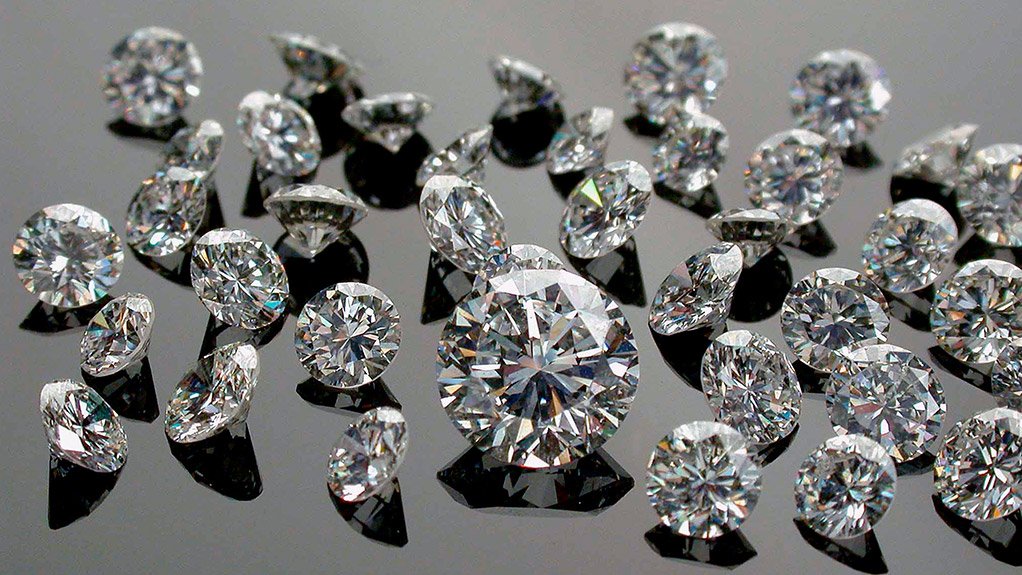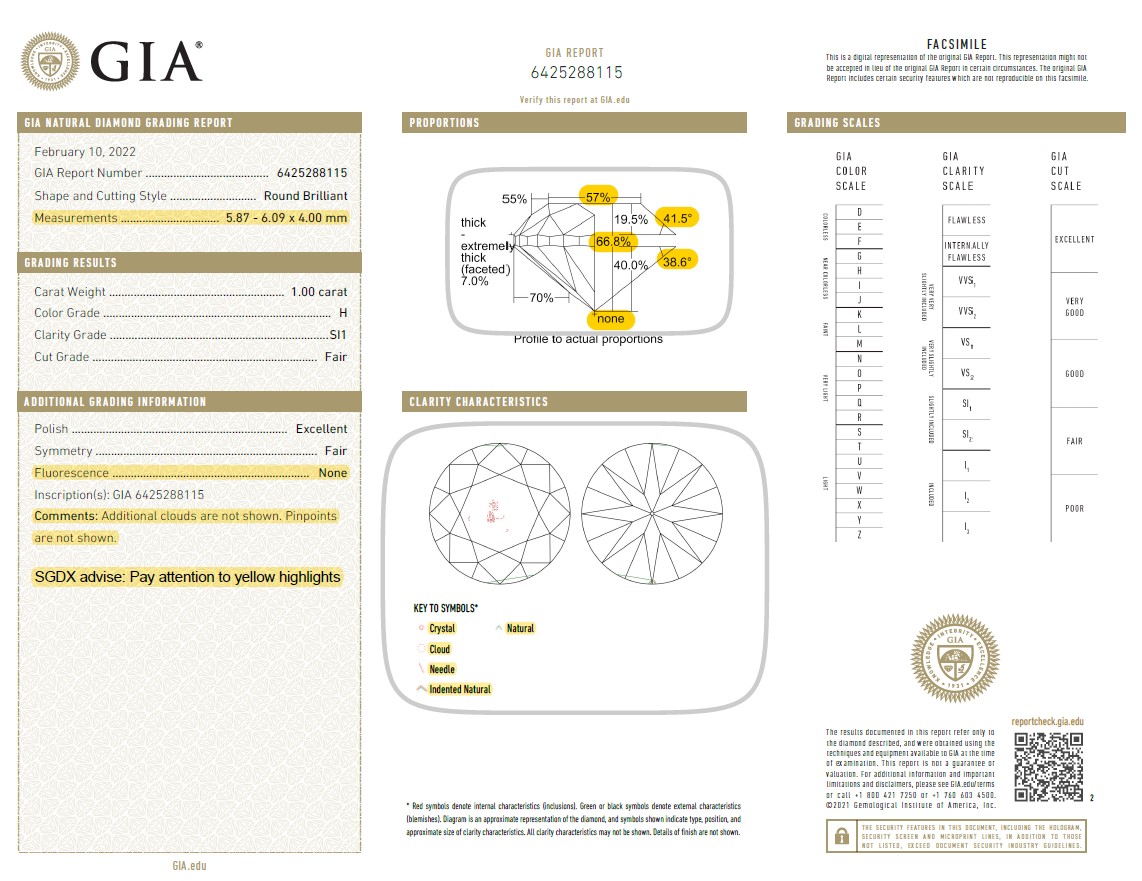Prioritizing Diamond 4Cs
Prioritizing the 4Cs in Diamond
Diamonds: What to Prioritize?
Investment Grade Diamonds? Best of 4Cs? Best of 3Cs? Best Value?

When it comes to buying diamonds, there is no one-size-fits-all approach. Diamonds are naturally formed over millions of years, each being unique and deserving a unique assessment. The 4Cs and other related factors are helpful in terms of making the assessment process easier.
Below we have outlined four scenarios that first-buyers often consider while buying diamonds. Use these scenarios to select the best option within a particular budget range.
These scenarios apply to natural mined diamonds, learn more here about lab grown diamonds.
Scenario 1: Buying the Highest Quality Diamonds
Under this scenario, shoppers prioritize quality over size. Accordingly, what they would often buy are “investment grade” GIA or AGS diamonds with flawless to VVS clarity and D to F color with excellent/ideal cut and no fluorescence, weighing at least 1 carat. The two factors that qualify diamonds in this range as investment grade are their rarity and scarcity. In our estimation, less than 1% of all naturally mined diamonds would have high enough quality in terms of all 4Cs and fluorescence in order for them to qualify as investment grade.
Below are two examples of investment-grade diamonds:
GIA 1.5 carat D IF ideal cut.
AGS 1.72 Carat E VVS1 ideal cut.
What diamonds qualify under this range?
- Lowest carat weight: 1 carat
- Lowest color: G color (at the top of the near colorless range).
- Lowest clarity: VS1 clarity
- Lowest fluorescence range: none
- Qualifying grading labs: GIA, AGS, GCAL
Scenario 2: Prioritizing Quality and Carat Weight
Shoppers in this category like to take a balanced approach. In doing so, they want to maximize on all four Cs instead of prioritizing the highest grades under each C. This is often the preferable approach and some diamonds under this category might even fall within the “investment-grade” range. So, what would be the ideal option under this category?
Generally, shoppers aim for 1.5 carat weight instead of 1-1.2 carat and choose a G/H color diamond with VS2-VS1 clarity, excellent cut, and tolerance for up to faint or medium blue fluorescence: shoppers still, however, stick with either GIA or AGS certification.
Here are a couple of examples of diamonds within the “balanced-approach” range:
GIA 1.2 carat G, VS2, excellent cut.
GIA1.5 carat H, VS1, ideal cut.
What range qualifies under this scenario?
- The lowest carat: 0.9 carat
- The lowest color: I color (near colorless range).
- The lowest clarity: SI1 clarity.
- The lowest fluorescence: none to medium blue fluorescence.
- Qualifying Grading Labs: GIA, AGS,GCAL, HRD, and IGI.
Scenario 3: Prioritizing Carat Weight with Optimal Brilliance
In this option, buyers want a big stone at the cost of the other 3Cs, although they still do not want to end up buying an ugly-looking stone either. This implies that, in a sense, they are willing to take a risk but in a very calculated manner.
Shoppers under this category do not mind a slight yellow tint and low clarity grades such as SI1/SI2 clarity as long as the stone is eye-clean in terms of inclusions with the cut being very good to excellent. Because they do not mind near colorless diamonds, they are willing to also consider strong blue fluorescence (fluorescence in I, J, K and lower color ranges is often a positive factor).
As result, these shoppers would go for a 2 carat diamond instead of 1.5 carat, SI1 or SI2 clarity, I/J color, good to excellent cut with very good to ideal proportions, and up to strong blue fluorescence. It is very important to only buy GIA certified diamonds in this range as other labs are not consistent when they grade lower clarity and color grades (avoid even AGS in this range).
Below are a couple of examples of good large stones with lower clarity and color but with brilliant options:
GIA 2 carat SI1, H, excellent cut.
GIA 1.5 carat, SI2, I, very good cut.
What range qualifies under this scenario?
- The lowest carat weight: 0.8 carat
- The lowest color: J color (bottom of the near colorless range)
- The lowest clarity: SI2 clarity so long as the stone is entirely or at least 90% eye-clean
- The lowest fluorescence: none to strong blue fluorescence (presence of fluorescence is usually preferred in this range)
- Qualifying grading labs: GIA
Scenario 4: Ignoring One C Entirely
Buyers in this scenario often ignore the importance of one C entirely in order to buy a big diamond within a tight budget range. They explore how to get a diamond with great fire and scintillation even after compromising on one C. What C would that be? For us, the C that should be compromised is Color. Diamonds in colorless grades with low clarity look dull and lifeless. Conversely, diamonds that are in low color grades such as K-M with high clarity grades such as the VS/VVS range still have amazing fire and scintillation, especially if they are well-cut. Therefore, the best approach to this scenario—assuming your budget is 5K—is to go for a 1.5 carat K-M color diamond with VVS/VS clarity and excellent cut (even strong blue fluorescence is acceptable). IGI or HRD certification labs are also acceptable for this range as they are consistent in grading low color and high clarity grade diamonds correctly.
Here are a couple of good examples in this range:
GIA. 1.53 carat round VS1, L color.
GIA. 3 carat VVS, L, blue fluorescence, ideal cut.
What range qualifies in this scenario?
- The lowest carat weight: any
- The lowest color: K-Z color (faint to light yellow)
- The lowest clarity: flawless to VS1 clarity
- The lowest fluorescence range: none to very strong blue— the presence of fluorescence is preferred in this range
- Qualifying grading labs: GIA, AGS, GSL, HRD, IGI, and PGS.
Other than the 4Cs, pay attention to these details in a Grading Report.

Conclusion:
To put it candidly, what you prioritize depends on your budget. If you have a big budget, we would advise that you purchase high-quality diamonds—investment grade type stones—because the chances of them maintaining their value as they age are high, owing to their rarity. Mining costs increase, and as a result, diamonds will become harder to mine and their prices will increase. Thus, an investment in a high-quality diamond can prove to be very beneficial in the future. Furthermore, these diamonds have the best brilliance, fire, and scintillation.
The second scenario is as good as the first one, and there is no harm in going for a balanced approach; not compromising excessively on any C and equally prioritizing quality and size. These types of high-quality and large-size diamonds are in high demand and have the best resale value. Additionally, these diamonds have high circulation since more people can afford to buy them as opposed to high-quality investment-grade diamonds that few people can afford.
If your budget is limited and size is important to you, compromising on clarity and color might help in terms of obtaining a decent quality diamond. However, it is important to do high due diligence and identify the right diamond with the right inclusion types (location) and fluorescence. In this scenario, it is important to ensure that the diamond is eye-clean. In other words, make sure you spend enough time learning about the details of the 4Cs before considering this option.
Finally, if you are willing to compromise on one C in order to get a big diamond, we recommend that you compromise on color and maximize on clarity and cut. Even if the diamond is slightly yellow, it will still have good fire and brilliance. Some buyers actually prefer warmer colors, so this might not be a bad option if you are okay with a slight yellow hue. If you find yourself considering this scenario, make sure you follow our fluorescence guide as it can be a helpful factor (blue is a complementary color to yellow, so blue fluorescence can make yellow diamonds appear whiter than their actual color grade).
Credit: Sharif Khan on 25th Feb 2022
